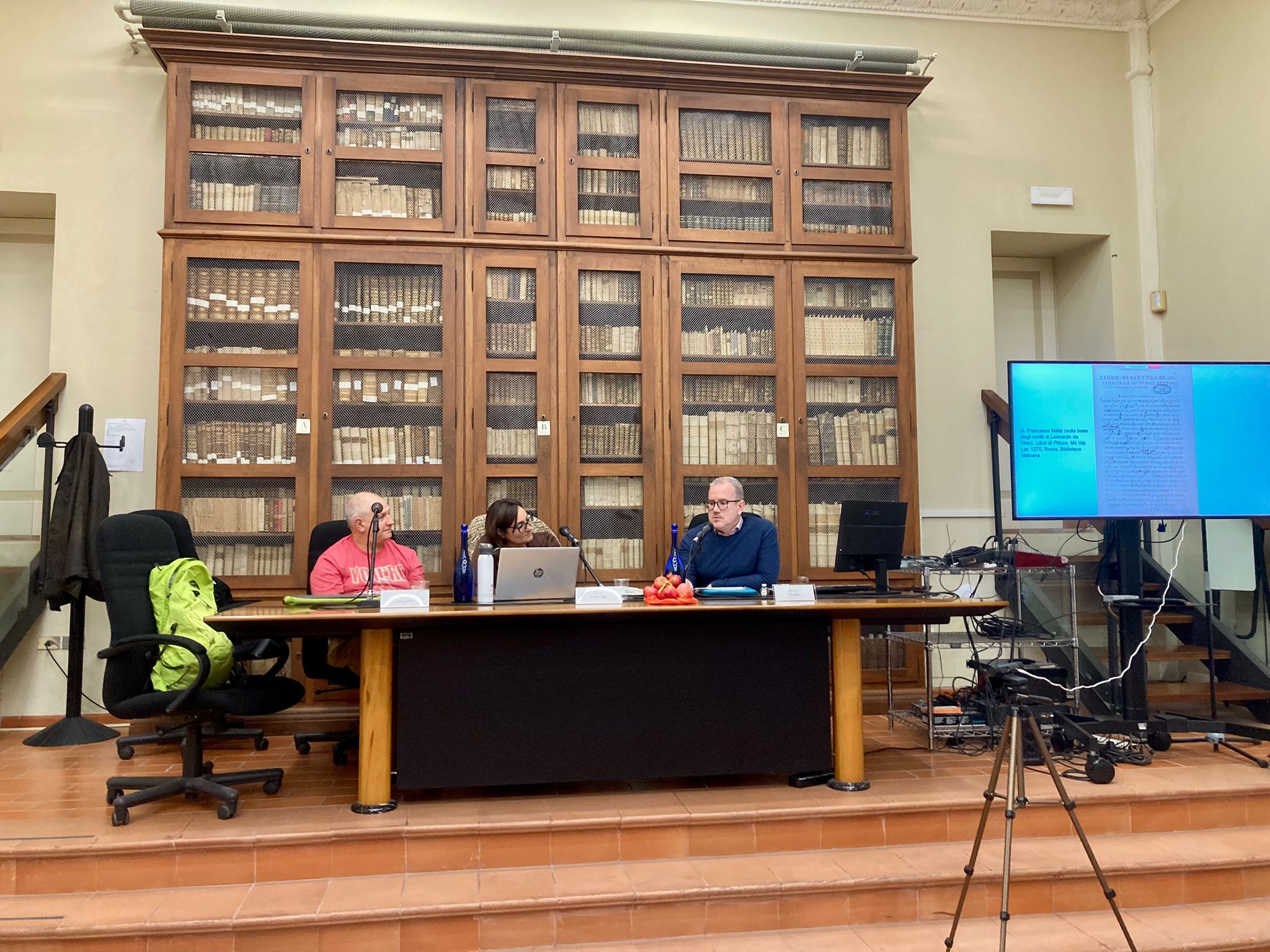THE LIBRARIA DUCALE of Urbino under Francesco Maria II Della Rovere: New Insights into Acquisitions, Humanistic, Scientific, and Artistic Interests
Silvio MARA | Catholic University of the Sacred Heart
The Tenth Cycle of Seminars on Adriatic Humanism was inaugurated on Tuesday, October 28, with a lecture by Professor Silvio Mara (Catholic University of the Sacred Heart). At the center of discussion was the Ducal Library of Urbino, originally conceived as an instrument for the cultural promotion of «mathematical Humanism» – a definition that best suits the intellectual developments of the sixteenth century. It is examined here through the new acquisitions and the resonances of connections and interests concerning Francesco Maria II della Rovere, who had been educated at the court of Madrid.
Within the Roman context, particularly that of the private fellowship of the Academy of the Vatican Nights (1562), the figure of Carlo Borromeo emerges, drawn precisely to the Ducal Library of Urbino. From several letters dated 1592, sent by Francesco Maria II to the papal court and the archbishopric of Milan, we learn of an episode that reveals a convergence of intellectual interests between the two men. The duke had realized that Borromeo had failed to return an incunabulum containing a treatise on prayer, the Oracional de Fernán Pérez (Murcia, Lope de la Roca and Gabriel Luis de Arinyo, 1487).
Another Spanish work, attesting to the duke’s cultural background and reflected in contemporary portraiture through a network of symbols and allusions, is Antonio de Guevara’s Relox de príncipes (Valladolid 1529). The treatise develops the metaphor according to which a Christian prince must act as a clock regulating the life of his subjects.
In the spirit of a historical continuity between Humanism and Christianity, the new Ducal Library of Casteldurante (Urbania) took shape as a primarily printed collection intended to encompass all fields of knowledge, complementing the Urbino library.
The final example of book acquisition examined was the Libro di pittura, compiled from the writings of Leonardo da Vinci by his pupil G. Francesco Melzi (ms. Vat. lat. 1270). The purchase appears to belong to the last phase of Francesco Maria II’s life, devoted to introspection and private study. In a letter dated February 19, 1602, the Venetian bookseller Pietro Facchinetti sought confirmation from the duke of the receipt of the “works” of the Florentine painter and sculptor Leonardo da Vinci.
Many thanks to all participants, and we look forward to seeing you again on November 4.
